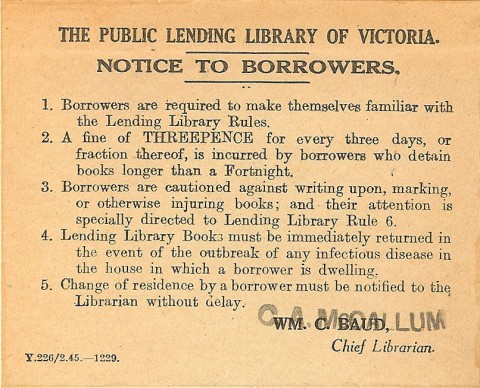Operation Chastise was the codename for the famous ‘dambusters’ raid carried out against three German dams by 617 Squadron on the night of 17 May 1943. The idea was to breach the dams and thereby deprive the factories of the Ruhr of their electricity. As far as the standard story goes — which everyone knows from the movie1 — it was the brainchild of the engineer Barnes Wallis, chief designer of the R100 airship, the Wellesley and Wellington bombers, the bouncing bomb (as used in the raid) and the Tall Boy and Grandslam earthquake bombs.
Though he may well have had the idea independently, Wallis wasn’t the first to think of bombing dams. Having said that, I don’t actually know of many other candidates.2 L. E. O. Charlton is one possibility. In a fictional coda to The Menace of the Clouds (the preface is dated September 1937), he imagined how an international air force might respond to an Italian attack upon (an independent) Egypt. Before dawn, the ISR (International Strategic Reserve) raids Italy’s major ports, and then:
At daylight a succession of strong flights flew inland from over the Tuscan Sea and proceeded to demolish the hydro-electric installations in the Appenine [sic] chain from Liguria to Abruzzi.3
However, Charlton doesn’t actually say that the dams themselves are the targets. And his choice of words is actually more suggestive of the generators at the base of the dams.
One other possibility is … the British government. There is a suggestion in Connelly’s Reaching for the Stars that the British were thinking about the possibility of attacking the Ruhr dams as early as 1937. He gives no details.4 But it looks like this interest actually made it into the papers, albeit in a roundabout way!
On 29 March 1938, the Daily Mail noted that Leslie Burgin, the Minister for Transport, had sent an ‘urgent’ message to the Port of London Authority, a message which caused it to cancel its public inquiry into a proposal for a Thames barrage at Woolwich, scheduled to start that very day. (Here, barrage means ‘dam’, not artillery fire — though the meanings are related, of course …)
He [Burgin] told them that the Committee of Imperial Defence had reported that the construction of the barrage would have “very serious disadvantages” from the standpoint of defence, and that the Government would be compelled to veto the project if it were promoted.5
The article explained further:
Experts had warned the Government that an appalling disaster might ensue if such a barrage was successfully attacked by bombs from the air. At low tide shipping and life would be imperilled in the lower reaches of the river.6
I should explain here that the proposed Thames barrage wasn’t a hydroelectric dam, nor was it primarily a flood defence like the modern Thames Barrier (which is about a kilometre upriver from the proposed barrage site). Its main purpose was to make the Thames above Woolwich tideless. This, the Thames Barrage Association asserted, would be a good thing because it would ease the access of ships and boats into the various London docks (which were, as I understand it, enclosed by a lock and kept at constant water level).7 It would also make it much easier to deliver coal to the various power stations along the river (the colliers couldn’t pass under the various bridges at high tide, it seems). Also, the tides also washed sewage, dumped into the estuary below Gallions Reach, as far upriver as Chelsea: the barrage would reduce this by four-fifths. And it would help prevent flooding. Among the minor benefits would be a reduced need for barge roads, which could be used for an airport beside the Thames (Battersea Reach was proposed). Essentially, the Thames above Woolwich would become one giant enclosed lock. In engineering terms, this was a trifle; in 1932, the Dutch completed construction of the Afsluitdijk, which enclosed the Zuider Zee at a similar height to the proposed barrage, and with two locks — and that’s 32 km long.
The London Port Authority was never very keen on the barrage anyway, but the Thames Barrage Association, which had been pushing the idea for a few years, was definitely not happy with this turn of events. It kept fighting the good fight — one of its leading lights, the engineer J. H. O. Bunge, published a book in 1944 called The Tideless Thames in Future London — but the barrage was never built. I’m not sure why, though eventually the decline of the great docks upstream of Woolwich would have undermined its main purpose. But presumably there is some intellectual relationship between the barrage and the Barrier, which began construction in 1974.
So, getting back to bombs. It seems likely to me that the CID’s analysis of the vulnerability of the Thames barrage drew in some way upon their study of the Ruhr dams. Obviously there are important differences between bombing the barrage and bombing the dams. The latter were much higher; the height of the Thames tide at Woolwich is about 7 metres, on average, whereas the hole breached in the Möhne dam was more than 10 times that in height. So, all else being equal, the rate of flow of water out of the breached barrage would have been much less than in the German dams. Fewer people would be at risk downstream (only people close to the shore might be affected). Actually, the greater danger might be to shipping upstream as the river suddenly emptied; this could cause great chaos in the docks. On the other hand, there would be less disruption of electricity to London’s factories — though there would be some because, as noted above, coal was delivered to the Thames power stations by barge.
Breaching such a relatively small dam might not require fancy bouncing bombs; conventional bombs might do the trick, with luck. Not that there is any sign here that anyone considered that there it might actually be difficult to attack a dam successfully. Of course, it wouldn’t be desirable to give away too much operational information in a public statement … but the urgency of Burgin’s message does give the impression that blowing up dams would be an easy thing to do. And this fits in with the widespread impression in the 1930s (and, as far as the public was concerned, during the war) that pinpoint bombing was easily achievable. In reality, of course, it wasn’t (as the Butt Report showed). Still, determined low-level attacks would probably have been able to put the lock out of action, at least, with consequent disruption to food and fuel imports into London. So Burgin was probably wise to put a stop to the barrage plan, even if he did so in an unnecessarily alarming fashion.8
Another aspect to the decision to drop the barrage is that it’s an example — if a negative and, I think, a rare one — of the effect that the possibility of bombing had on urban planning. This was much talked about in Britain in the 1930s. For example, in September 1938, the Spectator reported that the British delegation to an international urban planning congress in Mexico City
revealed in all its nakedness a picture of the life to which civilised man will be condemned if air-warfare is to be perpetuated as one of the enduring achievements of civilisation. It is true that his life would not be spent underground, but all the essentials of life would have to be duplicated underground. Car-parks would go beneath the surface so that they could be used as shelters […] hospitals would have to go underground, so would museums, for the security of their contents, so should all places of public entertainment, and communications must of course be constructed underground, at a cost of about £1,000 a foot.9
Despite its supposed necessity, in practice very little of this type of thing was ever carried out. I suppose it’s easier, and a lot cheaper, to not build something you wanted to, for fear of air attack, than to build something that you otherwise wouldn’t have done, for the same reason. If that makes sense. And admittedly, the underground hospitals and museums turned out not to be necessary, and the money was put to better use elsewhere. But the same sorts of choices — yes if it’s easy, no if it’s hard, despite the apparently dire threat faced — were made in the Cold War,10 and we’ll probably end up making the same non-choices with regards to modern-day threats like climate change. This time, however, we may regret it.11
![]() This work is licensed under a Creative Commons Attribution-NonCommercial-NoDerivatives 4.0 International License.
Permissions beyond the scope of this license may be available at http://airminded.org/copyright/.
This work is licensed under a Creative Commons Attribution-NonCommercial-NoDerivatives 4.0 International License.
Permissions beyond the scope of this license may be available at http://airminded.org/copyright/.
- Though they don’t in Germany, as I learned from a German historian when I was in London; he had never heard of the film or the raid. Which says something about the exaggerated importance attributed to Chastise in British (and Commonwealth) mythology as the representation of the bomber offensive, at least up until recently. [↩]
- It was common enough to think that the enemy might attack other elements of the electricity generation system, such as power stations; or that reservoirs might be rendered unusable by biological weapons. But dams are another story. [↩]
- L. E. O. Charlton, The Menace of the Clouds (London: William Hodge & Company, 1937), 291. [↩]
- Mark Connelly, Reaching for the Stars: A New History of Bomber Command in World War II (London: I. B. Tauris, 2001), 95. [↩]
- Daily Mail, 29 March 1938, p. 4. [↩]
- Ibid. [↩]
- E. F. Spanner thought that these locks were themselves a point of vulnerability to air attack. [↩]
- Though I guess it probably wouldn’t have been finished before the war, anyway. [↩]
- Spectator, 9 September 1938, 391. [↩]
- E.g. with regards to meaningful shelter programs to protect civilian populations from nuclear warfare. See David Miller, The Cold War: A Military History (London: John Murray, 1998), 149. [↩]
- Though for a more hopeful lesson from history, see this suggestion by Mark Roodhouse, which draws on the British experience of rationing during the world wars for advice to policymakers looking at implementing carbon rationing. [↩]





ISTR from ‘Test of Greatness’, that Bill Penney was very worried by the threat from an a-bomb detonated out of a ship in the Pool of London. That’s why the UK nuked the Monte Bello Islands first, before starting on the Aussie mainland: it was a closer analogue.
I wonder if the MOD ever dusted off the results of that test at some point in the last few years …
It’s a bit moot now that the nearest docks are a long way out from London. Were I them, I would worry more about other things.
Thought – each civilisation worries about a doom that has a lot to do with its virtues, not a doom that’s actually likely. ‘Tanks on the lawn’ is still the best way to take down an advanced country, but the public mind will persist in looking around them at their state’s virtues, and seeing how these could be turned into threats. Commerce. Airlines. Teh interwebs. Etc.
Fair point, though it might not apply to Liverpool?
On yr 2nd pt, that seems plausible, though I’d say that it’s more about novelty than virtue (naturally the two categories overlap a lot in this modern world) … basically it’s fear of the unknown. It takes quite a long time for a new thing, and all its implications, to become known and understood. After a generation or so, the risks of whatever-it-is become internalised, factored in, discounted. After that, it’s not something people worry about, unless something happens to suggest otherwise (eg something like September 11 could have happened decades earlier, but very few people in Western countries thought of aeroplanes as particularly risky objects anymore). That has holes big enough to fly a 767 through but it’ll do for a blog comment.